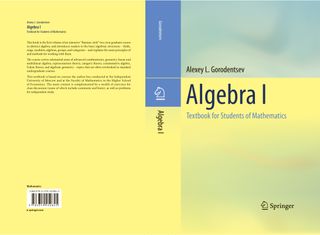?
Algebra I Textbook for Students of Mathematics
This book is the first volume of an intensive “Russian-style” two-year graduate course in abstract algebra, and introduces readers to the basic algebraic structures – fields, rings, modules, algebras, groups, and categories – and explains the main principles of and methods for working with them.
The course covers substantial areas of advanced combinatorics, geometry, linear and multilinear algebra, representation theory, category theory, commutative algebra, Galois theory, and algebraic geometry – topics that are often overlooked in standard undergraduate courses.
This textbook is based on courses the author has conducted at the Independent University of Moscow and at the Faculty of Mathematics in the Higher School of Economics. The main content is complemented by a wealth of exercises for class discussion, some of which include comments and hints, as well as problems for independent study.
